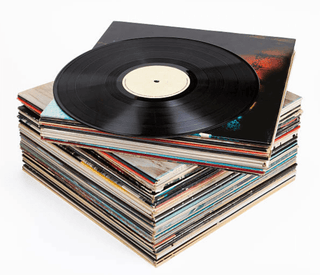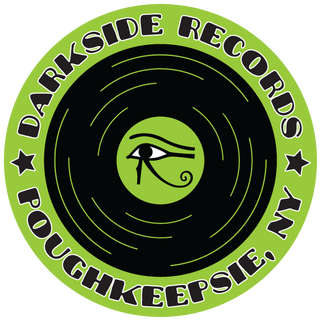Alfredo Bernardini- Dreyer: 6 Sonatas for Oboe & Continuo

Bernardini meets Dreyer: a distinguished period-instrument oboist explores the music of a little-known Florentine forebear. Domenico Dreyer was born in Florence in 1701 to an Italian mother and German father, at a time when Italy was experiencing a golden age for the oboe, led by technical innovations in the design of the instrument. The family was musical, but why he picked up the oboe is unknown, as is most of his early life. At any rate, these sonatas are preserved in manuscript form under his name - his only surviving music - and may have been published in 1727. What we do know is that Dreyer travelled with his brother, a singer and impresario, across Europe and as far as St Petersburg. In the early 1730s Dreyer was playing in Venice, where he most likely met Vivaldi, and a musical link between the two men is illustrated by these six appealing sonatas. At any rate, Bernadini is drawn to these sonatas, as he explains in a booklet introduction, 'because they combine ornamented and very expressive slow movements with fast movements of great virtuosity, using the possibilities of the two-key oboe to the extreme.' Bernadini draws out various thematic correspondences between particular movements of the sonatas and various parts of Vivaldi's output, while observing a more general Vivaldian flavour to the writing. We might know more but for Dreyer's sudden and unexplained death at the age of 34, 'due to an unfortunate event,' according to the best historical record available. The sonatas may be enjoyed on their own terms, however, as stylish examples of Italian Baroque chamber writing at it's zenith. They are performed here by Bernadini on a copy of a 1730 instrument by Giovanni Maria Anciuti (1674-1744), the most important Italian wind instrument maker of the time. Not only is this the closest available instrument to Dreyer's sonatas in terms of place and date, but it is also one of the few 18th-century oboes to feature the low C sharp, which Dreyer notates at the end of the Fourth Sonata. He is joined by a quartet of fellow Italian period- instrument specialists, who supply a richly varied continuo section. - Domenico Maria Dreyer (ca. 1680 - ca. 1740) was the son of the German tenor Johann Conrad Dreyer, born and raised in Florence. His life was closely linked to that of his younger brother Giovanni Filippo Dreyer, a castrato, impresario and opera composer. The brothers worked for a long time at the courts of Moscow and St. Petersburg and later in Italy. - Six oboe sonatas and two recorder sonatas have survived from his oeuvre. The oboe sonatas are of great musical beauty and stylistically belong to the Venetian High Baroque period of his contemporary Antonio Vivaldi. It is assumed that they were composed around 1725. - Each sonata typically follows a four-movement structure, alternating between slow, lyrical passages and lively, dance-like sections. This format allows for a rich exploration of the oboe's tonal capabilities, from it's warm, mellow low registers to it's bright, penetrating highs. Dreyer's sonatas often feature elaborate ornamentation and intricate melodic lines, demanding both technical proficiency and expressive nuance from the performer. - Played by the famous Italian oboist Alfredo Bernardini (founder of the Zefiro Ensemble) and a continuo group consisting of cello, archlute and harpsichord/organ.
Bernardini meets Dreyer: a distinguished period-instrument oboist explores the music of a little-known Florentine forebear. Domenico Dreyer was born in Florence in 1701 to an Italian mother and German father, at a time when Italy was experiencing a golden age for the oboe, led by technical innovations in the design of the instrument. The family was musical, but why he picked up the oboe is unknown, as is most of his early life. At any rate, these sonatas are preserved in manuscript form under his name - his only surviving music - and may have been published in 1727. What we do know is that Dreyer travelled with his brother, a singer and impresario, across Europe and as far as St Petersburg. In the early 1730s Dreyer was playing in Venice, where he most likely met Vivaldi, and a musical link between the two men is illustrated by these six appealing sonatas. At any rate, Bernadini is drawn to these sonatas, as he explains in a booklet introduction, 'because they combine ornamented and very expressive slow movements with fast movements of great virtuosity, using the possibilities of the two-key oboe to the extreme.' Bernadini draws out various thematic correspondences between particular movements of the sonatas and various parts of Vivaldi's output, while observing a more general Vivaldian flavour to the writing. We might know more but for Dreyer's sudden and unexplained death at the age of 34, 'due to an unfortunate event,' according to the best historical record available. The sonatas may be enjoyed on their own terms, however, as stylish examples of Italian Baroque chamber writing at it's zenith. They are performed here by Bernadini on a copy of a 1730 instrument by Giovanni Maria Anciuti (1674-1744), the most important Italian wind instrument maker of the time. Not only is this the closest available instrument to Dreyer's sonatas in terms of place and date, but it is also one of the few 18th-century oboes to feature the low C sharp, which Dreyer notates at the end of the Fourth Sonata. He is joined by a quartet of fellow Italian period- instrument specialists, who supply a richly varied continuo section. - Domenico Maria Dreyer (ca. 1680 - ca. 1740) was the son of the German tenor Johann Conrad Dreyer, born and raised in Florence. His life was closely linked to that of his younger brother Giovanni Filippo Dreyer, a castrato, impresario and opera composer. The brothers worked for a long time at the courts of Moscow and St. Petersburg and later in Italy. - Six oboe sonatas and two recorder sonatas have survived from his oeuvre. The oboe sonatas are of great musical beauty and stylistically belong to the Venetian High Baroque period of his contemporary Antonio Vivaldi. It is assumed that they were composed around 1725. - Each sonata typically follows a four-movement structure, alternating between slow, lyrical passages and lively, dance-like sections. This format allows for a rich exploration of the oboe's tonal capabilities, from it's warm, mellow low registers to it's bright, penetrating highs. Dreyer's sonatas often feature elaborate ornamentation and intricate melodic lines, demanding both technical proficiency and expressive nuance from the performer. - Played by the famous Italian oboist Alfredo Bernardini (founder of the Zefiro Ensemble) and a continuo group consisting of cello, archlute and harpsichord/organ.



